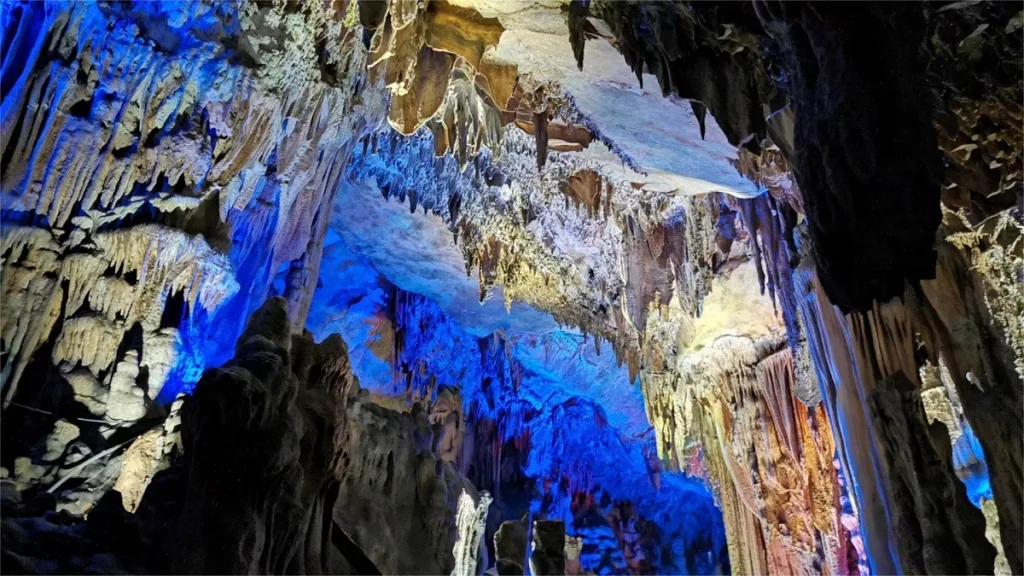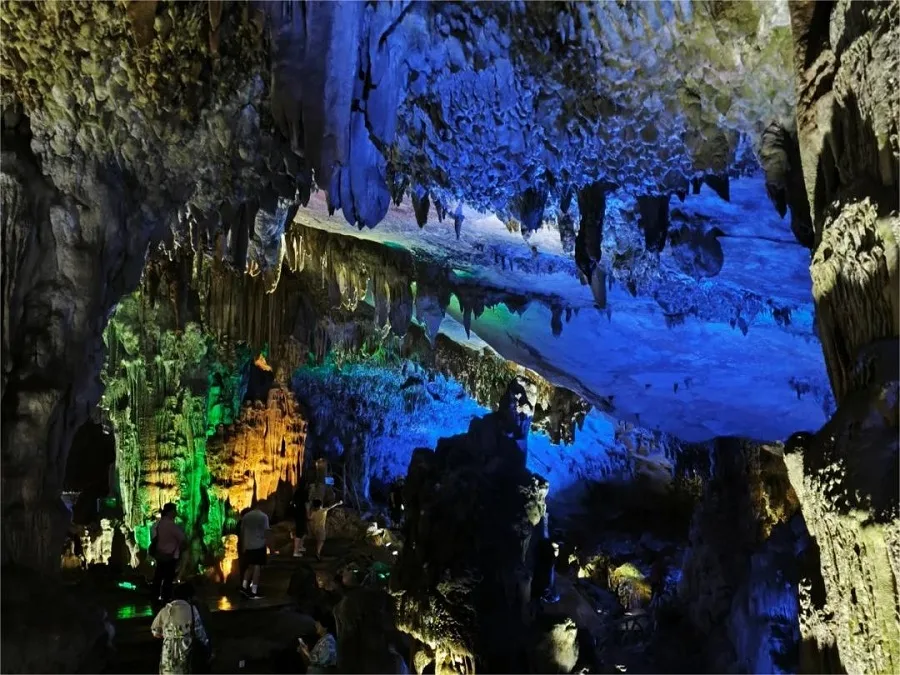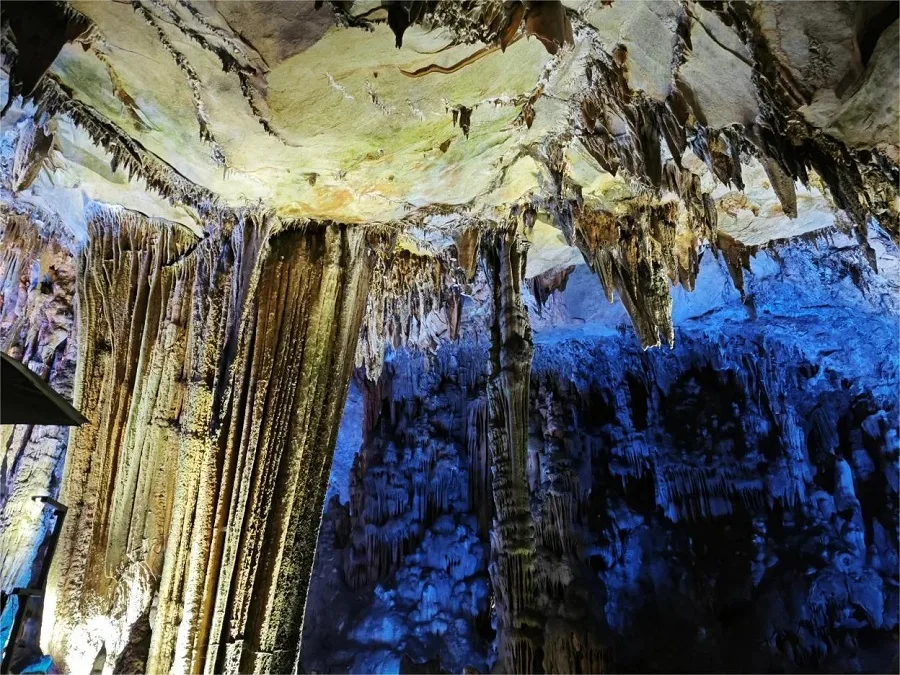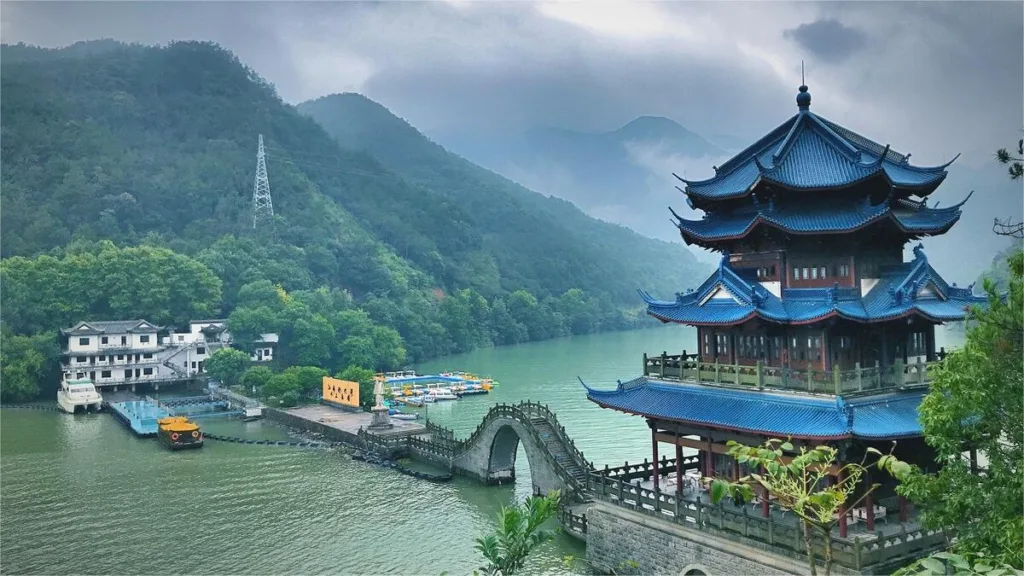Lingqi Karst Cave, Zhejiang – Ticket, Opening Hours, Location, and Highlights


Lingqi Cave (灵栖洞), located in Jiande City, Zhejiang Province, consists of three main caves: Lingquan Cave, Qingfeng Cave, and Aiyun Cave, along with the Lingqi Stone Forest. Covering an area of over 20,000 square meters, each cave offers unique features: Lingquan Cave is renowned for its water features, Qingfeng Cave for its wind, and Aiyun Cave for its misty clouds. The Lingqi Stone Forest captivates visitors with its lifelike rock formations resembling various objects and figures.
According to historical records in the Jiande County Chronicles, people have been exploring the cave’s wonders since the first year of the Yonglong reign of Emperor Gaozong of the Tang Dynasty (680 AD). An inscription dating back to the Yuan Dynasty recounts the tale of ancient people praying for rain during a severe drought. At the entrance of Lingquan Cave stands a fragrant maple tree, approximately 40 meters tall and planted over 700 years ago, bearing witness to the area’s long history.
Table of Contents
- Basic Information
- Location and Transportation
- Highlights of Lingqi Cave
- Vlog about Lingqi Karst Cave
- Other Attractions in Jiande
Basic Information
| Estimated Length of Tour | 2 hours |
| Ticket Price | 85 RMB |
| Opening Hours | 8.00 – 16.00 |
| Telephone Number | 0086-0571-64569230 0086-0571-64569198 |
Location and Transportation
Lingqi Cave is located 35 kilometers southwest of Jiande City in Hangzhou, Zhejiang Province, China. It is an integral part of the Fuchun River-Xin’an River Scenic Area. To reach Lingqi Cave, one can take a bus from Jiande Bus South Station to Shouchang (approximately 20 minutes), then transfer to a minibus bound for Lingqi Cave. Alternatively, there is a direct air-conditioned minibus service from Hangzhou Bus South Station to Lingqi Cave at 13:10 daily, with a journey duration of 4 hours.
Highlights of Lingqi Cave
Lingquan Cave

Lingquan Cave is renowned for its water features. The cave’s winding river channels and diverse rock formations create a stunning and peculiar landscape. With its crystal-clear waters reflecting the surrounding scenery, the cave is often described as having “ever-flowing emerald waters.” The underground river stretches over 300 meters, featuring numerous twists and turns and earning the nickname “Nine Bends and Five Pools.” Visitors can admire scenic spots like the “Yellow Dragon Bowing Head” and the “Crystal Palace” as they glide along the river in small boats, marveling at the reflections of stalactites in the water.
Qingfeng Cave

Qingfeng Cave stands out for its gentle breezes. Maintaining a constant temperature between 14 to 17 degrees Celsius throughout the year, the cave offers a refreshing escape from the scorching heat outside during the summer months. In contrast, winter brings warm breezes, creating a cozy atmosphere akin to spring. The cave boasts a rich variety of landscapes, with exquisite formations like stalactites, stalagmites, and draperies resembling carved white jade. The cave comprises a corridor, six halls, and thirty-six scenic spots. Among these, the “Dragon, Phoenix, Qilin, and Turtle” are particularly breathtaking, lending an air of mystique to the cave and giving rise to its name, “Lingqi,” meaning “residence of the spirits.”
Aiyun Cave

Aiyun Cave is renowned for its mystical clouds and mists. Before dawn on winter mornings or prior to rainfall, wisps of white clouds often rise gently from the cave entrance, creating a magical spectacle. Inside the cave, visitors are greeted with intricate and enchanting formations, making it the crown jewel among the three caves. Aiyun Cave boasts seven grand halls and seventy-two scenic spots, each offering a unique and captivating view. The most famous among these spots are the “Divine Needle of the Sea” and the “Hanging Canopy of Heaven.”
Lingqi Stone Forest

Covering an area of 10,000 square meters, the Lingqi Stone Forest features an array of peculiar rock formations characterized by their varying heights, shapes, and densities. As visitors meander along winding mountain paths and traverse among the rocks, they encounter eighteen sets of lifelike rock formations, including “Phoenix Seeking Phoenix” and the “Twelve Zodiac Signs.” These formations are remarkably realistic and captivating, showcasing the typical karst landscape architecture.
Vlog about Lingqi Karst Cave
Other Attractions in Jiande

Daci Cliff

Little Three Gorges of Fuchun River

Xinye Ancient Village
Hangzhou attractions, Zhejiang scenery